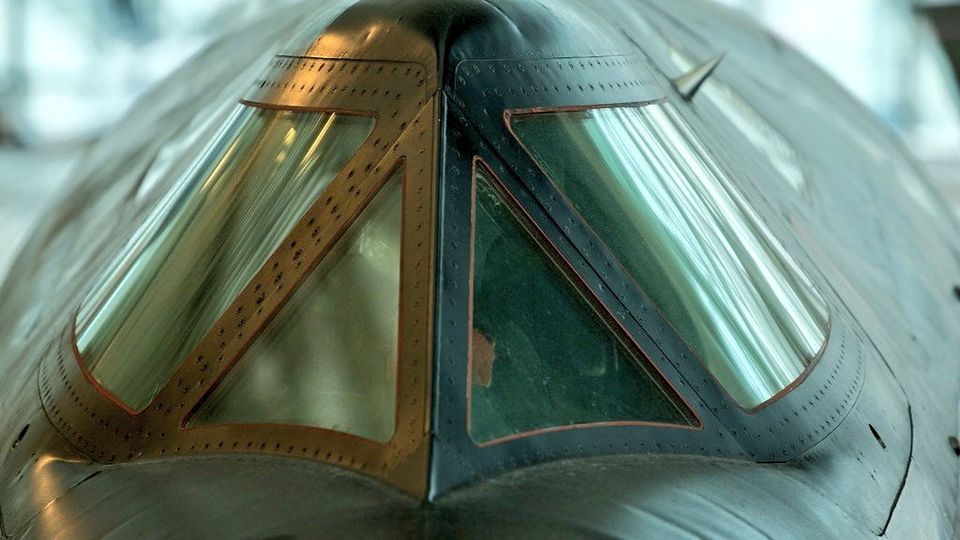SR-71 Blackbird Pilots and RSOs, even with gloves on, couldn’t keep their hands by the glass for more than a few seconds without doing damage.
During its career, the SR-71 Blackbird gathered intelligence in some of the world’s most hostile environments. The SR-71 was conceived to operate at extreme velocities, altitudes and temperatures: actually, it was the first aircraft constructed with titanium, as the friction caused by air molecules passing over its surface at Mach 2.6 would melt a conventional aluminum frame.
Its engineering was so cutting edge that even the tools to build the SR-71 needed to be designed from scratch.
There are so many interesting facts about the legendary Blackbird.
 For instance, the glass of the canopy of the SR-71 cockpit was made of 1.25-inch thick solid quartz.
For instance, the glass of the canopy of the SR-71 cockpit was made of 1.25-inch thick solid quartz.
Yes, the solid quartz glass of the canopy was 1.25 inches thick and was hot to the touch from the inside!
According to Military Machine, pilots and RSOs, even with gloves on, couldn’t keep their hands by the glass for more than a few seconds without doing damage. The crewmembers wore David Clark Company’s pressured suits for their protection. The David Clark Company’s pressured suits made it possible for SR-71 crew members to fly at altitudes that would otherwise kill them! Flying the SR 71 as RSO was my father’s job. He had been a Blackbird backseater for 8 1/2 years when I was growing up and thankfully I had no idea what Daddy was doing at work.
 SR-71 canopy. Image by Curt Mason
SR-71 canopy. Image by Curt Mason
Let’s talk about the windows in the SR-71 and about the severe heat the windshield of the SR-71 would experience at top speeds. Skunk Works Designers ultimately decided that using solid quartz for the windshield was the best way to prevent any blur or window distortion under these conditions, so they ultrasonically fused the solid quartz to the aircraft’s titanium hull to make the quietest cockpit possible; the estimated temperature of the outside of the cockpit of 600 degrees F.
As reported by The SR-71 Blackbird website, the integrity of the double solid quartz camera window demanded special attention because of the optical distortion caused by the effect of great heat (600 degrees F.) on the outside of the window and a much lower temperature (150 degrees F.) on the inside could keep the cameras from taking usable photographs. Three years and $2 million later, the Corning Glass Works came up with a solution: the window was fused to its metal frame by a novel process using high frequency sound waves.
